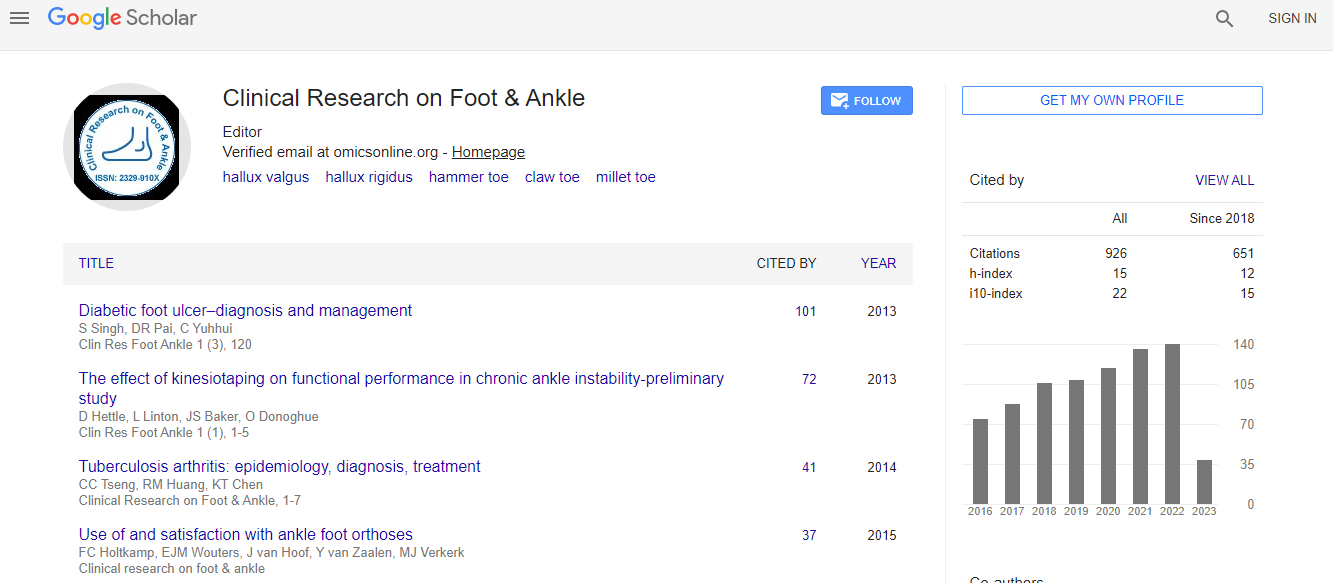Case Report
Three-Dimensional Force Analysis of Gait of a Trans-Femoral Amputee with Prosthesis
Anand B Shetty* and Roy Puthenpurackel
University of St Mary, Leavenworth, KS – Kansas, United States
- Corresponding Author:
- Shetty AB
Professor/Co-Director of Research
University of St Mary, Leavenworth
KS – Kansas, United States
Tel: 757-358-5757
E-mail: anand.shetty@yahoo.com
Received Date: September 06, 2016; Accepted Date: September 28, 2016; Published Date: September 30, 2016
Citation: Shetty AB, Puthenpurackel R (2016) Three–Dimensional Force Analysis of Gait of a Trans-Femoral Amputee with Prosthesis. Clin Res Foot Ankle 4:209. doi:10.4172/2329-910X.1000209
Copyright: © 2016 Shetty AB, et al. This is an open-access article distributed under the terms of the Creative Commons Attribution License, which permits unrestricted use, distribution, and reproduction in any medium, provided the original author and source are credited.
Abstract
Background: Prosthetic devices should provide proper alignment of segments and joints for efficient gait. Rehabilitation specialists should carefully assess the best fit of prosthesis for proper force distribution and comfort. The purpose of this paper was to examine the three-dimensional forces of a permanent prosthesis compared with the temporary prosthesis of an amputee during gait.
Case description: A 58-year-old female, trans-femoral amputee, who was diagnosed with kidney disease, diabetes, and heart disease, consented to be a subject. The patient was tested for three-dimensional forces of gait wearing temporary prosthesis and the same test was performed three months later with a newly designed (permanent) prosthesis.
Results: The results indicated that the patient had increased anterio-posterior and push-off forces with the permanent prosthesis. In addition, the medio-lateral forces were reduced which resulted in better balance during gait.
Conclusions: Rehabilitation specialists should fit the prosthetic devices to the patients rather than fitting the patients to the prosthesis. In this study, the force analysis of gait was beneficial in assessing the best fit of prosthesis. Therefore, motion analysis should be performed to observe any deviations in balance, gait, and forcedistribution.

 Spanish
Spanish  Chinese
Chinese  Russian
Russian  German
German  French
French  Japanese
Japanese  Portuguese
Portuguese  Hindi
Hindi 
